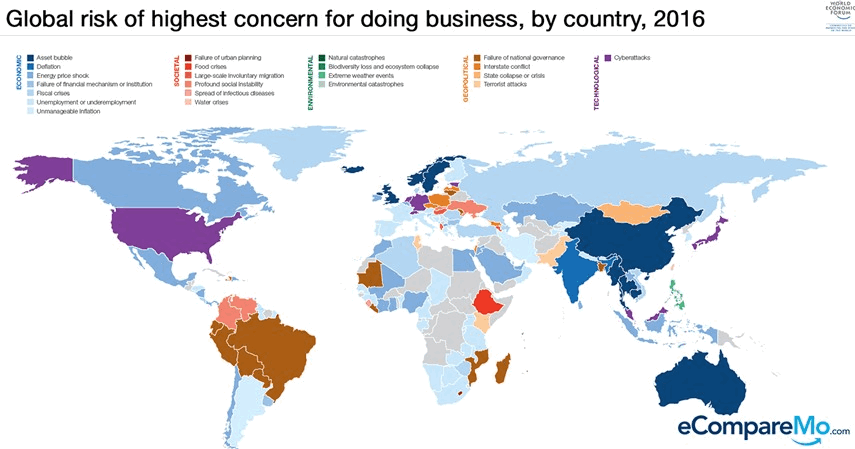What Are The Top 10 Risks For Doing Business In The Philippines?
3 min readAccording to the World Economic Forum, underemployment ranks as the No. 1 risk for doing business in 41 economies. But things are a bit different here.

No country is perfect for business; no matter how strong the economy, there will always be risks involved in making industries flourish.
It pays to understand which risks for doing business are highly likely to happen—and the World Economic Forum (WEF) has been doing a great job reminding people about these since they started the Global Risks Report in 2005.
For this year’s edition, they’ve highlighted the top risks that investors must face when doing business in a certain country, including ours.
The WEF asked 742 respondents from all around the world—coming from different sectors of society such as business, government, academe, and civil groups—and found out the dangers that can negatively impact our country if left unchecked.
According to the Global Risks Report 2016, the top 10 risks for doing business in the Philippines are as follows:
1. Extreme weather events
2. Natural catastrophes
3. Failure of critical infrastructure
4. Energy price shock
5. Failure of national governance
6. Failure of urban planning
7. Unemployment or underemployment
8. Failure of climate-change mitigation and adaptation
9. Terrorist attacks
10. Unmanageable inflation
It’s no surprise that three of the greatest risks we face are in the top 10, with two of them occupying the top spots. Strong typhoons such as Yolanda, Glenda, and Pablo strike the country annually and leave billions in damage.
Aside from typhoons, the country is also prone to other natural disasters like landslides, volcanic eruptions, earthquakes—especially that the Natural Capital Region is sitting atop of the West Valley Fault, which is one of the major fault systems in the country. In 2013, a magnitude 7.2 earthquake rocked Bohol and other parts of Central Visayas, causing 222 casualties and countless homes leveled to the ground.
Socio-political hazards
Regarding the lack of policies to address the ramifications of climate change, it is unclear as to what will be the country’s answers to the worsening environmental condition. Despite participating in the recently held COP21 in Paris, the government did not further elaborate on its plans to create environmentally sustainable policies.
Meanwhile, four of the top 10 risks fall under the economic category, namely: failure of critical infrastructure, energy price shock, unemployment or underemployment, and unmanageable inflation. While the Aquino administration boasted of economic growth under his leadership, the government still has a long way to go, especially with food safety, energy, healthcare, and transportation system, among others.
Human threats
Aside from economic problems, the Philippines is also prone to geopolitical problems, according to the said report. Terrorism attacks, which are due to factors like Jemaah Islamiyah’s ties to some rebels in the country, are likely to happen. Aside from the threat of terrorism, tensions between the Philippines, China, and other claimants in the West Philippine Sea are ongoing, which may or may not escalate to direct confrontation.
Finally, societal problems like poor urban planning—especially in Metro Manila—can negatively have an impact on businesses in the country. Knowing the importance of reinventing the cities to become more efficient for both business and people, architect Jun Palafox told Zipmatch that issues like heavy reliance on vehicles, decaying urban resources, and ignoring risks that can devastate cities will make Metro Manila worse, which in turn, can pull down the entire country.
There are many other risks of doing business in the country, sure, yet these are the most critical ones that may prevent the economic building blocks of the country from making the Philippines one of the most promising economies in Asia realize its potential. –Dino Mari Testa
